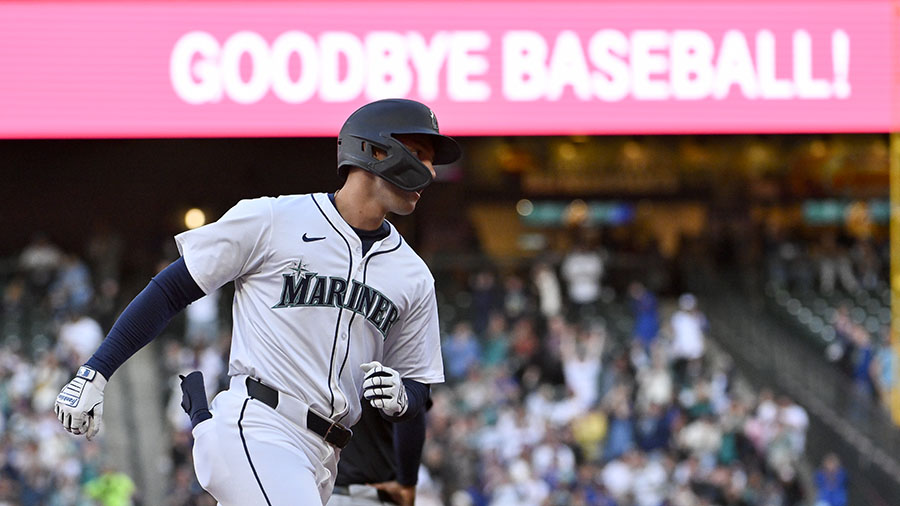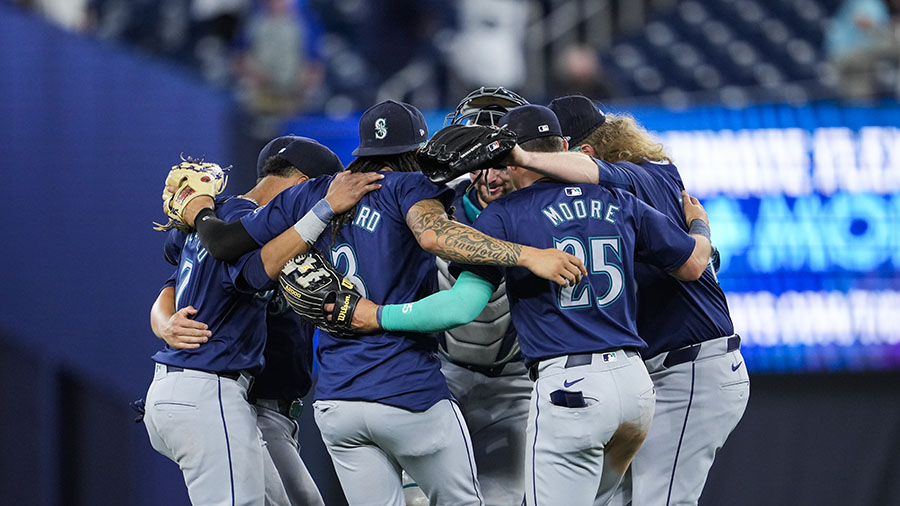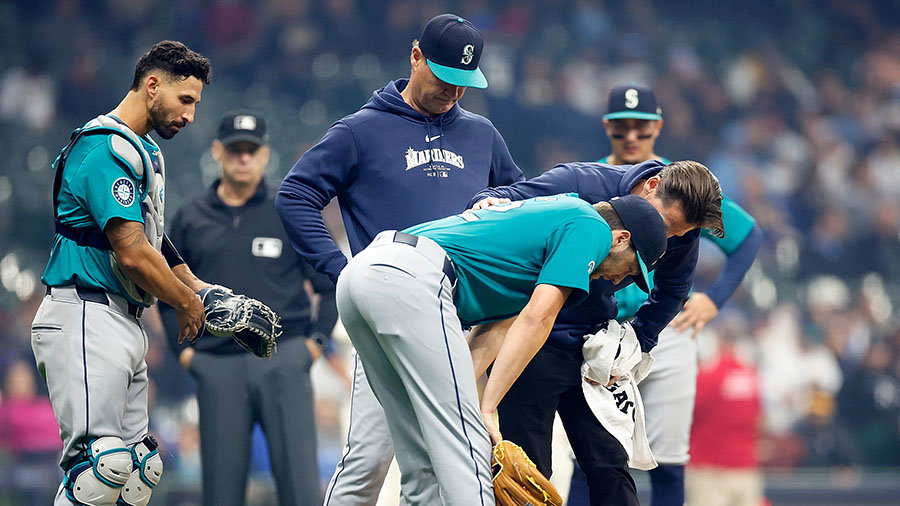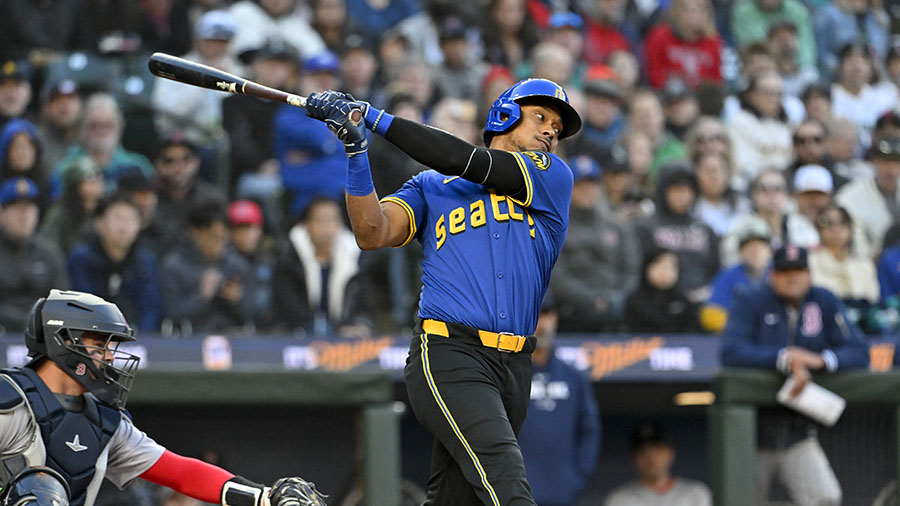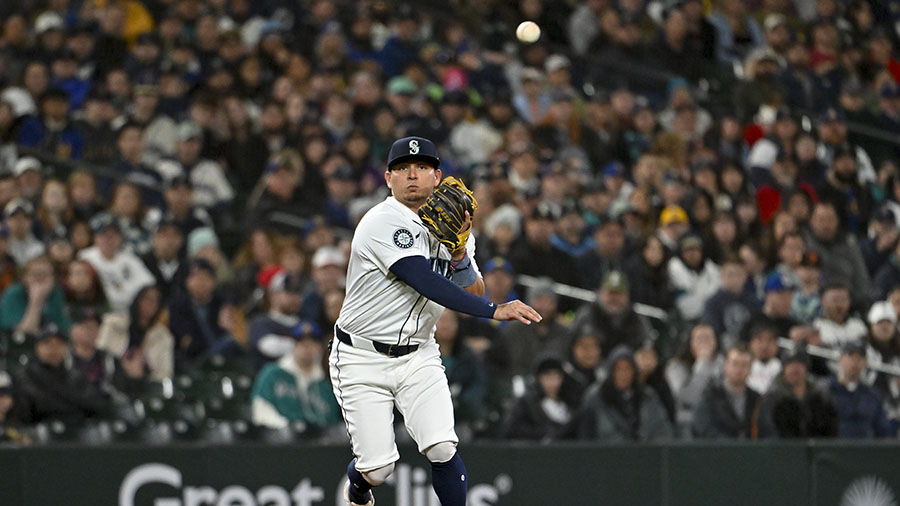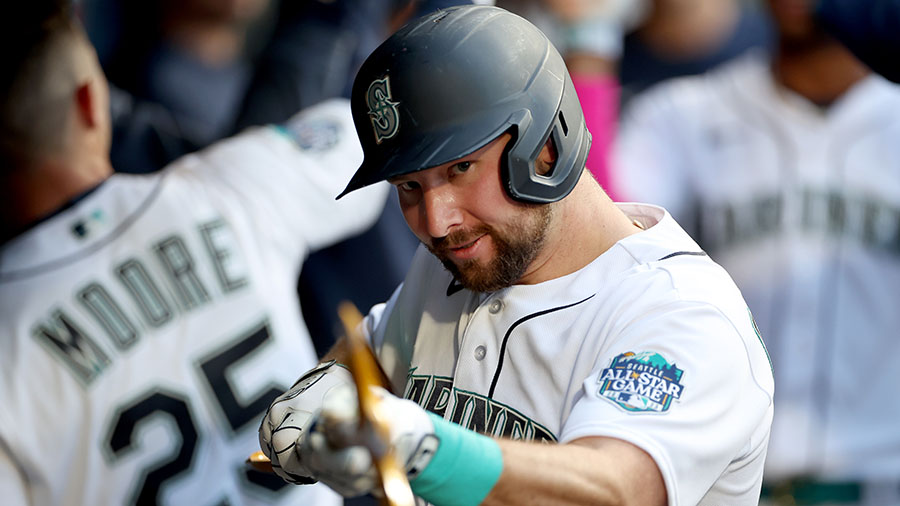Drayer: Led by players like Mitch Haniger, the Mariners are speaking a new hitting language
Feb 27, 2019, 11:40 PM
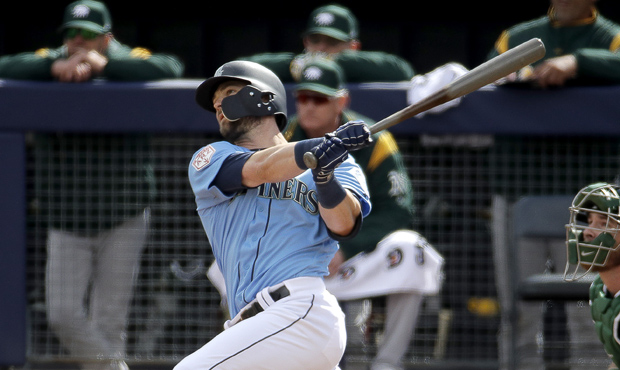
The Mariners are embracing a new style of teaching hitting that Mitch Haniger has favored. (AP)
(AP)
Like many hitters who have had breakout seasons in recent years, Mariners outfielder Mitch Haniger’s work before the 2017 season began in the cages of a private hitting facility.
Need to Know: How do Mariners’ stars compare with elite teams?
On the advice of good friend and former Diamondbacks teammate Daniel Descalso, Haniger made the short trip from his home in Mountain View, Calif., to the Simi Valley area to hit with noted hitting coach Craig Wallenbrock. It wasn’t just Wallenbrock there to coach Haniger, though, but his group that included Robert Van Scoyoc, who was hired as the Dodgers’ hitting coach this winter, and new Mariners hitting coach Tim Laker.
“I loved everything they talked about,” Haniger said of the experience. “How they break down the swing to each movement, your feet, your hands, everything. They bring in the analytics on what you do good, what you don’t do good. Where guys try to pitch you, where you are successful. They kind of are the whole package.”
The whole package – out of season. What about in-season?
In past years, teams would check in throughout the offseason with coaches working with their players to get an understanding of what they were doing and perhaps try to keep them closer to a club plan. But there has been a big turnaround of late with outside performance centers leading the way in bringing the ‘new’ to organizations in a game that has usually been very slow to change. This spring we are seeing with the Mariners’ hitters utilize new technology, more in-depth breakdowns aided by analytics, new hitting philosophies and approaches being coached, and even new language and terminology being heard.
“We are talking hitting differently,” Mariners manager Scott Servais said. “I think that is the shift throughout the industry, not just in our clubhouse. As you get to spend more time with the Mitch Hanigers of the world, they start talking differently about what they are trying to do, which is different from how I was taught. So now I am having to adjust, but I enjoy it.”
A better way to teach the same idea
The work with the hitters goes well beyond ‘C the Z.’ Swing path and getting on plane with the baseball early has been a focus, something being prioritized at the plate by first baseman Ryon Healy, who also worked with the Wallenbrock group this winter.
“It was a big area of talking in the offseason,” Healy said. “Sometimes when you are not in a good hitting position you’re moving a little fast to the plate, and it causes you to swing at pitches you didn’t want to swing at because you are worried about things you shouldn’t be worried about. When you get to a good hitting position earlier you can fire from there shorter and quicker because you don’t have to make the decision until later.”
The idea is not new, but the way it now taught is, according to Servais.
“Ted Williams talked about it for years, but I don’t think anyone really grasped it,” Servais said. “We were always working at kind of doing the wrong thing. Hopefully it really helps your timing out so your timing doesn’t have to be perfect because you are in the slot or strike zone longer. You can handle different ranges in velocity, different pitches better, more consistently.”
Another area of focus in camp has been swing decisions. What are players doing in 1-1 and two-strike counts? It is here, with the approach, that one veteran has seen the biggest changes throughout his years in the big leagues.
“It changes it seems like yearly, honestly,” said Kyle Seager. “The different theories, approaches. You went from ‘Make sure you put the ball in play, hit the ball on the ground, make the infield work, fly balls are outs, you hit the ball on the ground you give yourself a chance, make sure you put the ball in play.’ Then it turned into ‘Well, ground balls are outs. Hit the ball in the air.’ Swinging was protecting the zone, now you talk about controlling the zone. You talk about strikeouts are going to happen, it’s not the worst thing, when before it was strikeouts are the worst thing.
“It changes. It has been a very liquid thing for sure.”
These trends and approaches have not just been with the Mariners. It is a constant chess match between pitchers and hitters, with the pitchers who have led the way in using analytics and technology to this point seeming to have come out ahead in recent years. The hitters are playing catch-up, and to that end the Mariners are reinforcing some of their numbers with video.
“They have done a really good job of breaking it down, showing you trends of really good hitters, what their chase rate looks like, what their called strike (rate) looks like,” said Haniger. “Two guys that are really, really good hitters, Mike Trout and Joey Votto, they’re not afraid to take a close pitch with two strikes. They know the zone very well. Those guys also strike out at a high rate on strike three calls, not on chasing. They don’t chase much. That just shows you they are trying to do damage over the heart of the plate and that they are willing to take a borderline pitch just trying to shrink the zone. That has been a big talking point. I love that. I feel like when I am going good, that’s what I do.”
Seager is grateful for the extra information.
“There’s a lot of information that is very useful,” he said. “Any time you have more information going into an at-bat, that he likes to throw a 2-0 changeup … now you have got percentages. What are the strike percentages, what are the chase percentages? There’s much more information that definitely can help your approach.”
Combining the old with the new
For another veteran, Jay Bruce, it is a matter of keeping perspective and incorporating the new information into what has worked for him in the past.
“It’s about trying to identify things that you can utilize to get a just a little bit better,” Bruce said. “I think people tend to lose sight of what it takes to actually improve. People have these big, huge aspirations of doing all these crazy things, changing what they do or what they have done so drastically, and I think you get two, three, four percent better in a season. That’s a lot, especially over such a long period of time. Small changes and small improvements will really help a lot over the long run, but it is being patient, being diligent and not putting the buggy in front of the horse, as they say.”
Servais is the first to point out that one approach does not fit all. Hitting is still very individualized and will remain that way.
“Hitting is such a hard skill,” he noted. “The hardest thing in any sport. It’s eye-hand coordination. Some of it is a gift that you get, but you have to respect – certainly the veteran guys – there’s different guys at different points of their career. The nice thing about some of the tech that is involved right now is it gives you immediate feedback.”
Feedback that Haniger believes can be eye-opening and should be trusted.
“Some hitters say ‘Oh yeah, I like the ball inside,’ but all of their damage is done middle away. So they think they like the ball in, but they really don’t,” Haniger said. ‘It’s good to see that, because that is fact. Feel might be a little different than fact. That’s why I like a lot of video too, because what I am feeling doesn’t always match up to what I am seeing on film, and the video doesn’t lie.”
The Mariners have a very interesting mix of veterans and younger hitters, and they realize that the biggest challenge is not the information. Rather it’s teaching that information and speaking the hitting and learning language of each individual.
“That’s another thing that has gone through cycles,” said Seager. “Years ago maybe it was you don’t want to bog the guys down, you don’t want to give the guys too much information to where they can’t process it. Now it’s like they are starting to give a little more information, asking for more input and feedback. Definitely the terminology has changed quite a bit and it seems to be progressing into a positive thing.”
A different generation, an evolved approach
Younger players like Haniger, Healy, Kyle Lewis and Evan White that are the reason why there is less concern for information overload. That has been one of the bigger lessons learned by Servais in his three years as a Major League manager.
“We don’t give the players enough credit in the fact of what they can absorb, what they can take in,” Servais said. “The old adage, ‘Oh, don’t overload them, don’t give them too much.’ I have kids 26, 24, 21, they are well advanced in what they can take in in little snippets, and that’s how they work. Everything is quick, quick, quick. It’s Twitter, it’s text messages, everything is quick. They are just wired differently than I was or we were. I think they can take it and they can filter better.”
It’s adapting to the times, and at a rate rarely seen in this game. Veterans or younger players, it’s hard to ignore results. Bottom line is, players young and old are looking for what can make them better. ‘See ball, hit ball’ or ‘Stick with what got you here’ is no longer enough when so much information is available and others are using it. The players realize this is not just a trend, this is the direction baseball is going in.
“I think the game of baseball itself is pretty simple and it always has been and I hope it always will be,” said Bruce. “I try to look at it that way, but I also try and have an open mind to the new information, the new technology. I am a fan of gathering the information and being able to think about it myself as far as how I want to use it. Baseball is going to continue to push forward and I hope to be on that train as long as I can.”
“I think it just makes you a smarter hitter,” said Haniger. “You need to always be trying to learn something new. If you are an established veteran who is in the room here and you never thought about it that way or looked into those things and been really successful, keep an open mind to it. But at the same time stick to what makes you good. But if you are a younger guy, you should embrace it and learn because pitching nowadays is only getting better and better. Guys aren’t throwing slower, they are only throwing harder. You have to know what you want to do when you get in the box and have a plan.”
Said Seager, “You as an individual player have to ask what is going to help make you the most successful to help your team. You take what you want. Alonso Powell years ago in Triple-A talked about having an imaginary journal in your back pocket. You write everything down because you listen to everybody, you take it all in. Then you pull out what you want to pull out, what you need. Just because you wrote everything down doesn’t mean you have to use everything. You take out the pieces you like that will help you that kind of fits in with what you want to do. If you are a young guy you try a lot of things. You don’t know what you are yet. It’s a great place to experiment.”
Servais realizes that this is a transition period of sorts, and that the transition period will be relatively shortly lived.
“It takes time for players to build trust with it, trust the coaching staff, trust the technology and how it is working,” he said. “A lot of players are very curious, they want to see how this plays out. The game evolves, it continues to improve and get better and we have to adapt.
“Different guys are at different points of their careers, but as players come through our minor league system they are already speaking that language. That’s the way the game is going. That’s the way the Mariners are going.”
Takeaways: Mariners GM Jerry Dipoto’s interview with Brock & Salk





